The Phanteks Enthoo Pro Case Review
by E. Fylladitakis on March 30, 2015 8:00 AM EST- Posted in
- Cases/Cooling/PSUs
- Full-Tower
- Case
- Phanteks
Test setup
Professional testing requires the emulation of real-world situations but with repeatable results; thus, a perfectly controllable test setup and environment are required, especially for comparable results. Testing the thermal performance of any case with a typical real-world setup technically limits the comparability of the results to this setup alone, as an active system interacts with its environment and the change of a single component would alter myriads of variables. As such, we developed synthetic loads that emulate the thermal output of real systems, which however are passive, steady and quantifiable. As such, the thermal testing now displays the thermal capabilities of the case alone, as if it would have to deal with the entire thermal load by itself, regardless of the system that would be installed inside it. Laboratory data loggers are being used to monitor the PT100 sensors and control the safety relays, which are fully accessible via our custom software. Three such loads have been developed; the ATX version simulates a 200 W CPU, 50 W VRM, 30 W RAM and 4 × 120 W GFX card thermal load. Finally, three 3.5" HDD dummy loads have also been created, with each of them converting 30 W of electrical power to thermal, bringing the total thermal load of the ATX test setup up to 850 Watts. As such, the thermal load is immense and only the best of cases will be able to handle it for more than a few minutes, we are also performing a test with a thermal load of 400W, with all of the aforementioned components except the HDD drives at about 42% power, which is more suitable for the majority of cases.
Thermal testing has been performed with the stock fans operating at maximum speed. Noise testing has been performed with a background noise level of 30.4dB(A). Advanced noise testing is also being performed, in order to assess the ability of the case to dampen the noise of the components installed inside it. This includes the installation of two noise-generating sources (strong fans) inside the case, one positioned approximately over the first expansion slot and one over the CPU area, which generate ≈ 44.2 dB(A) when unobstructed. During the advanced noise test, all stock cooling options of the case are entirely disabled.
Results and discussion
Even though the stock thermal performance of the Enthoo Pro is not going to set any performance records, Phanteks' design can compare with other cases of similar size that are aimed at the same group of consumers. It outperforms the similarly priced XFX Bravo Type-01 and it falls a little behind the Corsair Graphite 760T, which however is currently retailing for nearly twice the price of the Enthoo Pro. The thermal performance of the Enthoo Pro is almost identical with that of the Corsair Obsidian 450D, a more expensive and considerably smaller case.
The stock cooling fans are meant to compromise between thermal performance and comfortable acoustics, meaning that they are neither too strong nor entirely silent, yet they manage to keep the temperatures within acceptable levels without generating too much noise. They are audible at their maximum speed but the noise level is borderline comfortable for home users. Their noise levels drop significantly at lower speeds, making them nearly inaudible at 50% speed. With the PWM fan controller present in the Enthoo Pro, these fans should maintain negligible noise levels while the system is performing casual everyday tasks and turn audible only when the processor load increases significantly, such as during gaming.
The Enthoo Pro is a case that has been designed for cooling performance. With so many openings, its capability to reduce the noise generated by components inside the case is very limited. It managed to reduce the noise coming from our artificial noise source by 1.6db(A), a measurable figure but nevertheless this change is imperceptible by ear - the vast majority of humans can differentiate between noise sources only if there is a change of at least 2.5dB(A) (most require a change of at least 5dB(A) to notice the difference).


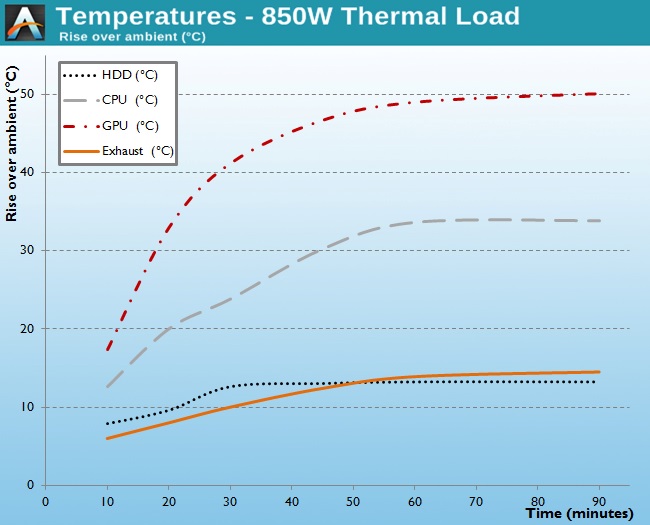
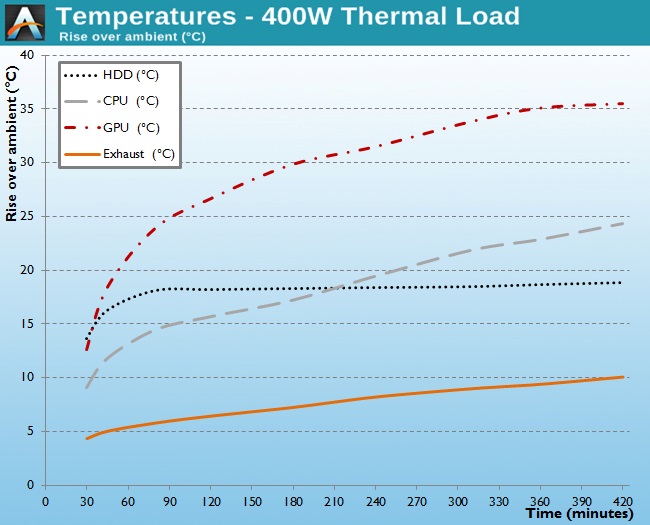
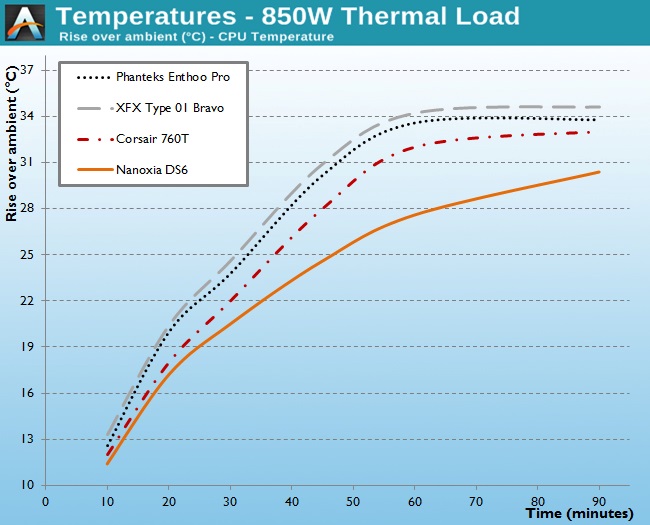
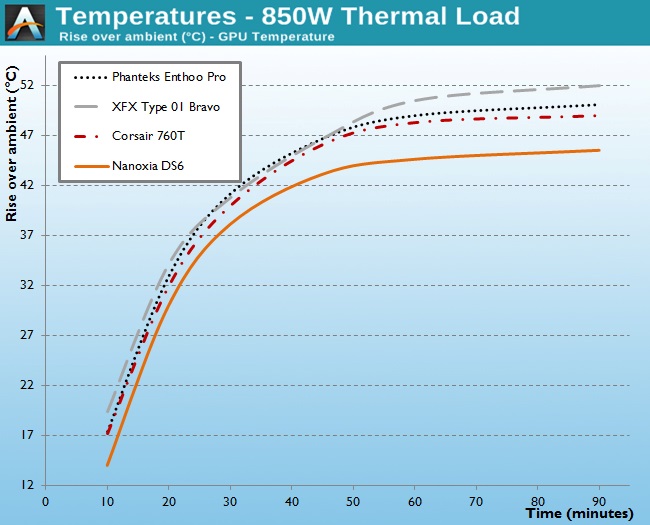
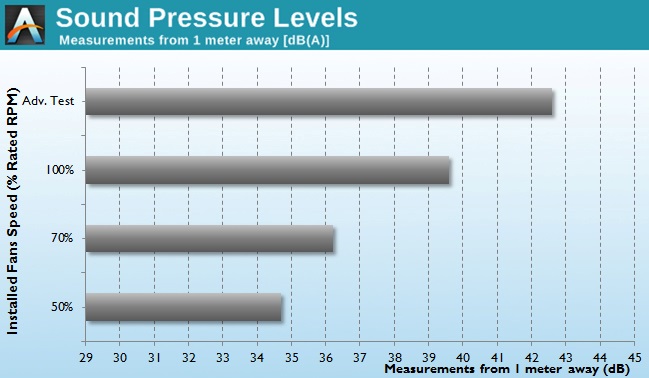








50 Comments
View All Comments
ncsaephanh - Monday, March 30, 2015 - link
Love this case! First saw it on Linus tech tips, and used it for my brother's build and was immediately impressed by not only the features of the case, but the roominess. Tons of room for expansion, along with a simple and sleek aesthetic while not sacrificing airflow (the filters BTW are very easy to access). Cable management is also fantastic. Cannot recommend this case any more than I already have.twanto - Monday, March 30, 2015 - link
Does spell-check not exist for internet articles?bigboxes - Tuesday, March 31, 2015 - link
Yes it does. I only wish that douche-check was standard operating procedure.Folterknecht - Tuesday, March 31, 2015 - link
When you speak greek (I think it is) as good as the author speaks english you can come back and complain. Until then stfu!Murloc - Tuesday, March 31, 2015 - link
that's a 11.16 oz can, it's not 11.2 oz!!!!11gopher1369 - Wednesday, April 1, 2015 - link
Agreed with you. My gaming setup is ITX: Coolermaster Elite 130 case, 256Gb SSD and 1Tb laptop harddrive. It's great and sits in my AV unit under my TV next to my Xbox.gopher1369 - Wednesday, April 1, 2015 - link
*sigh* my comment was meant to be a reply to an earlier comment, but it's stuck it on the end. Also no obvious way to edit/delete, anyone?I blame my old and horribly locked down work PC with IE8.
46460 - Saturday, April 4, 2015 - link
I bought the Enthoo Primo about a year and a half ago right when it came out and it's the END ALL of cases. Stock, it can fit 2x480mm rads + a 240mm, but I modded the side and cut out a bit of the drive bays for ANOTHER 480mm rad. So right now I have 3x480mm rads with Delta fans, a huge reservoir with an Iwaki RD20 pump on the back; it's almost powerful to passively cool my overclocked 3930k and an R9 290. The case quality is fantastic. Also, I want to point out that the PWM controller that it came with is AMAZING. Can control a large quantity of fans with your motherboard and OS software real time..really a great feature, along with the quality 140mm fans it included (3).All in all, I love my case with all of its space, and despite a front fascia that doesn't quite stick flush I am very happy with my purchase and wouldn't hesitate to buy it again at $250. I must say, however, I underestimated the sheer size of WEIGHT of the unit; fully stocked, my PC weighs like 70 pounds, but it's totally worth it ;)
echtogammut - Wednesday, April 8, 2015 - link
No comment on the drawing on the front of the box? How did something like that pass cursory review?Posaune - Saturday, July 24, 2021 - link
This idea that ALL cases should ditch older tech storage housing is odd - reality is like this: there are MARKET SEGMENTS; this has 5.25 bays, which I will be filling with an ASUS DVD drive (writer) which allows me to easily play a library of existing DVDs and to rip my pretty large CD library. It's simple I fit in with that segment. There is another segment which does none of this. Think long and hard about tech: there is still terrestrial radio and it remains quite healthy. This is tech of the turn of the last century. Still with us and not going away.